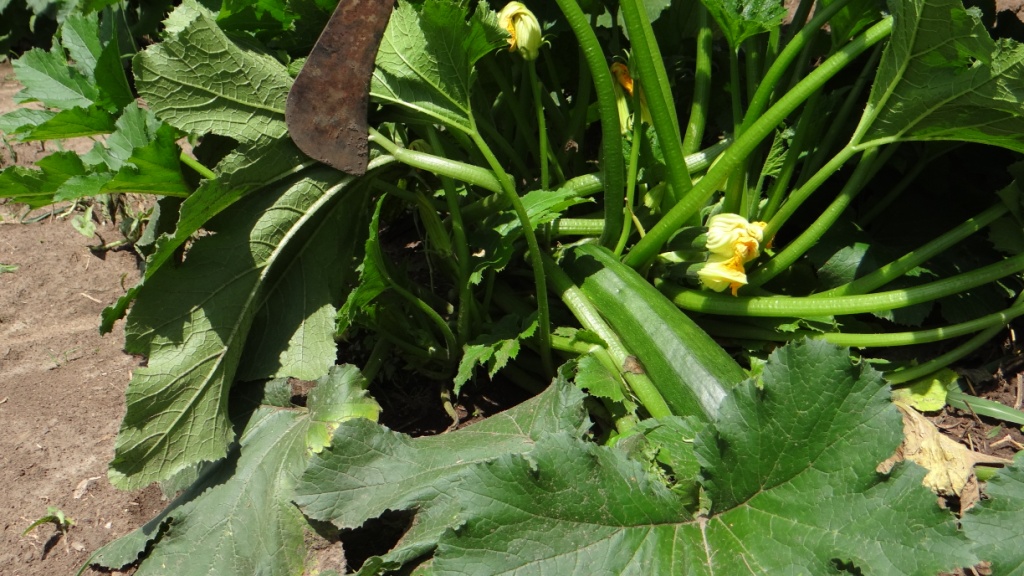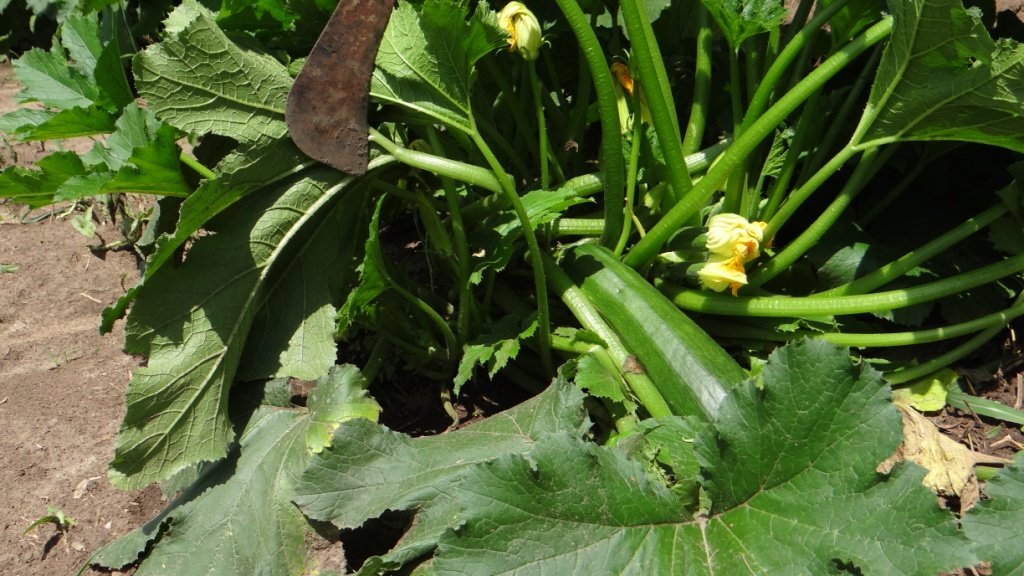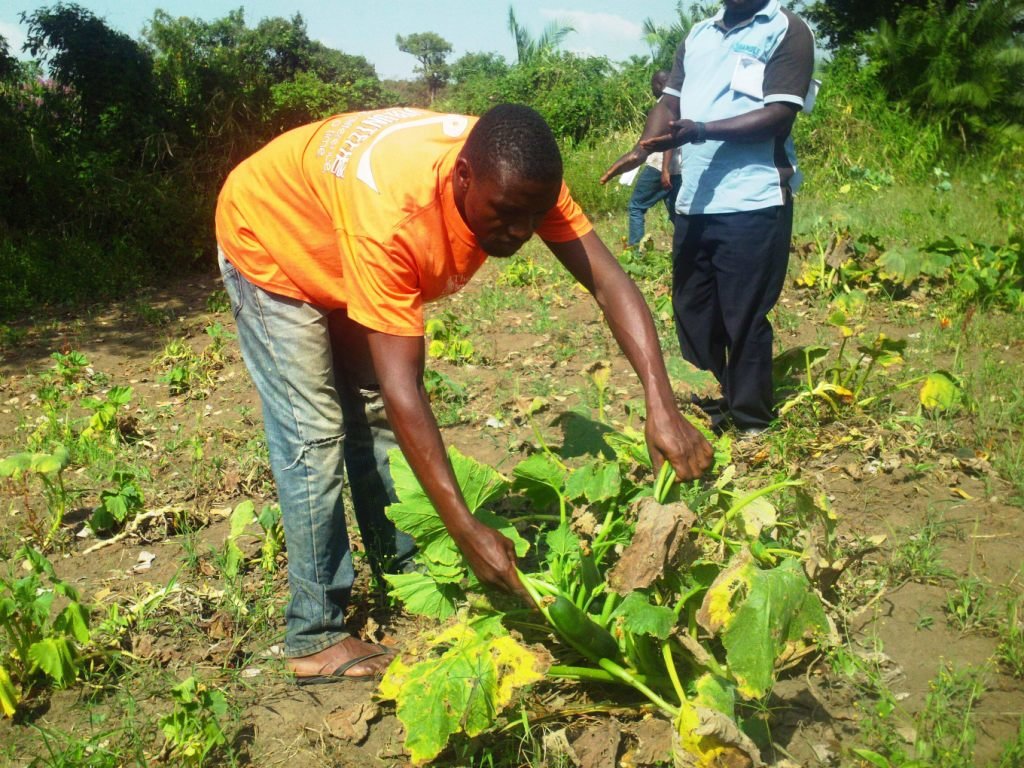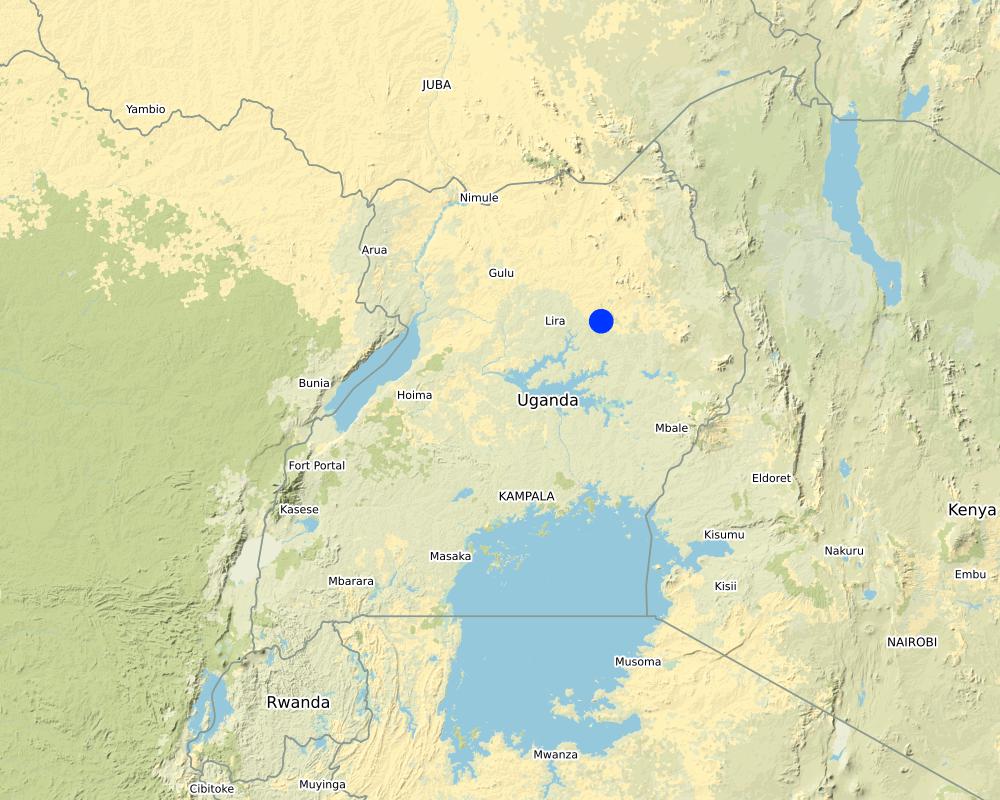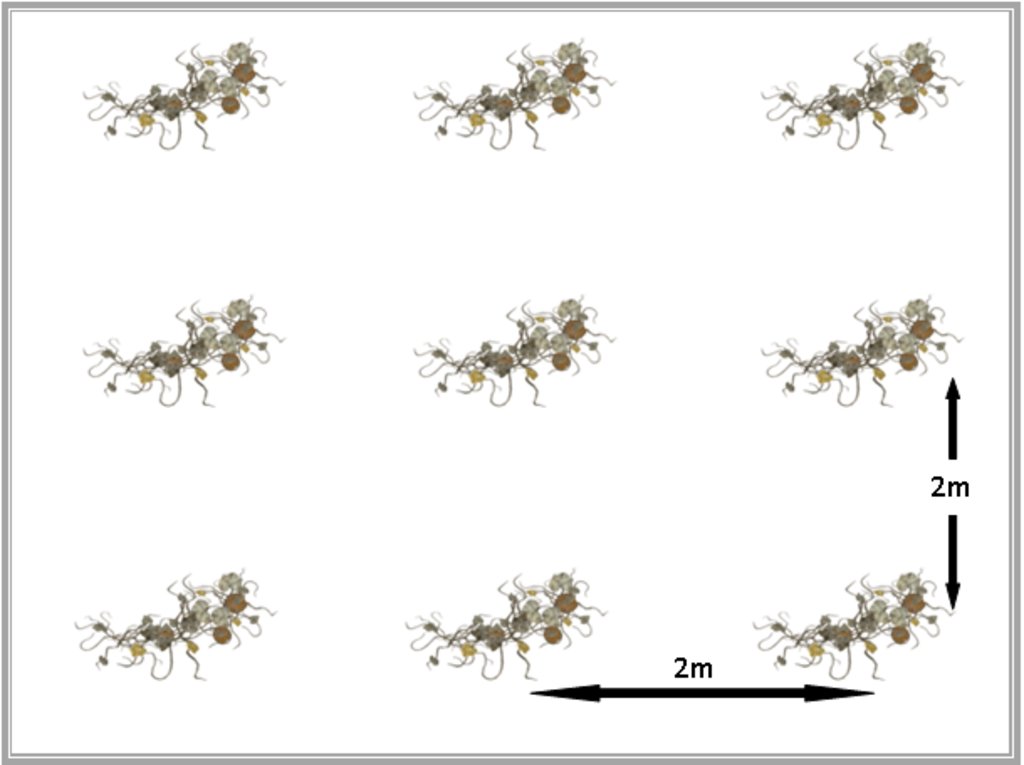Baby Melon as a Cover-Crop in Lowlands [Uganda]
- Creation:
- Update:
- Compiler: Bernard Fungo
- Editors: JOY TUKAHIRWA, Kamugisha Rick Nelson, Sunday Balla Amale, betty adoch
- Reviewers: Drake Mubiru, Udo Höggel
Pito kodi pi gengo wi ngom
technologies_2822 - Uganda
View sections
Expand all Collapse all1. General information
1.2 Contact details of resource persons and institutions involved in the assessment and documentation of the Technology
Key resource person(s)
Manager:
Mwebesa Nelson
+256777945474
Koro sub county, Omoro district
Uganda
Name of project which facilitated the documentation/ evaluation of the Technology (if relevant)
Scaling-up SLM practices by smallholder farmers (IFAD)Name of the institution(s) which facilitated the documentation/ evaluation of the Technology (if relevant)
Uganda Landcare Network (ULN) - Uganda1.3 Conditions regarding the use of data documented through WOCAT
When were the data compiled (in the field)?
11/05/2017
The compiler and key resource person(s) accept the conditions regarding the use of data documented through WOCAT:
Yes
1.4 Declaration on sustainability of the described Technology
Is the Technology described here problematic with regard to land degradation, so that it cannot be declared a sustainable land management technology?
No
2. Description of the SLM Technology
2.1 Short description of the Technology
Definition of the Technology:
Baby melon (cucumis melo) is used as a cover-crop to prevent soil degradation
2.2 Detailed description of the Technology
Description:
Baby melon, as a cover crop, protects soil from erosion and compaction due to rain drops. The cover crop also conserves soil moisture during drought periods. Besides soil conservation, baby melon is used as source of food and income to the land user. It is a vegetable crop which looks like pumpkin with wide leave and scroll on the surface of the land and has the ability to prevent soil erosion from run-off. The crop is also commonly grown along streams where it protects the banks from erosion, provides manure through leaf-fall, and reduces the risk of flooding by increasing the evopo-transpiration from its wide leaves.
To establish this cover crop, farmers use seeds, which is locally conserved from previous fruiting or bought from agro-input shop. Seeds are sown directly into a pre-cultivated garden. Usually planting is at a spacing of two meters. Planting is usually done at the start of the rainy season. Weeding, as well as pest and disease management is done the way pumpkins are usually managed. Fruits are harvested at a relatively early stage (~2 months after planting). A more juvenile fruit is preferred to the more grown one for its nutritional value.
The benefit of the technology is first for food, income and also for protection of the soil from the effect of running water and rain drops. The farmer obtains nutritious food from the fruits of this plant. The plants also prevent soil erosion and take a very short time to mature. When the plant covers an area, it reduces weed growth, thus reducing the cost of weeding. One disadvantage of this technology is that the pumpkins do not have a popular market and have a very short shelf life. Fruits therefore, have to be sold immediately after harvesting. The market value of the crop is generally low.
2.3 Photos of the Technology
2.4 Videos of the Technology
Date:
11/05/2016
Location:
Omoro District
Name of videographer:
Isa Aiga and Sunday Balla Amale
2.5 Country/ region/ locations where the Technology has been applied and which are covered by this assessment
Country:
Uganda
Region/ State/ Province:
Northern Region,Uganda
Further specification of location:
Koro Subcounty, Omoro District
Map
×2.6 Date of implementation
If precise year is not known, indicate approximate date:
- less than 10 years ago (recently)
2.7 Introduction of the Technology
Specify how the Technology was introduced:
- through projects/ external interventions
Comments (type of project, etc.):
The annual crop used as a vegetable
3. Classification of the SLM Technology
3.1 Main purpose(s) of the Technology
- reduce, prevent, restore land degradation
- conserve ecosystem
3.2 Current land use type(s) where the Technology is applied

Cropland
- Annual cropping
Main crops (cash and food crops):
Maize, Sorghum
3.3 Further information about land use
Water supply for the land on which the Technology is applied:
- rainfed
Number of growing seasons per year:
- 2
Specify:
March to May and September to November
3.4 SLM group to which the Technology belongs
- improved ground/ vegetation cover
3.5 Spread of the Technology
Specify the spread of the Technology:
- evenly spread over an area
If the Technology is evenly spread over an area, indicate approximate area covered:
- < 0.1 km2 (10 ha)
3.6 SLM measures comprising the Technology

agronomic measures
- A1: Vegetation/ soil cover
3.7 Main types of land degradation addressed by the Technology

soil erosion by water
- Wt: loss of topsoil/ surface erosion
- Wr: riverbank erosion
3.8 Prevention, reduction, or restoration of land degradation
Specify the goal of the Technology with regard to land degradation:
- prevent land degradation
4. Technical specifications, implementation activities, inputs, and costs
4.1 Technical drawing of the Technology
4.2 Technical specifications/ explanations of technical drawing
Spacing between baby melon plants is 2m by 2m. This spacing enables vigorous growth and quick soil surface cover.
4.3 General information regarding the calculation of inputs and costs
Specify how costs and inputs were calculated:
- per Technology area
Indicate size and area unit:
1 acre
If using a local area unit, indicate conversion factor to one hectare:
2.5
other/ national currency (specify):
Uganda Shillings
Indicate exchange rate from USD to local currency (if relevant): 1 USD =:
3498.0
Indicate average wage cost of hired labour per day:
5000
4.4 Establishment activities
| Activity | Type of measure | Timing | |
|---|---|---|---|
| 1. | Clearing | Management | Start of season |
| 2. | Planting | Agronomic | Start of seson |
| 3. | Weeding | Agronomic | One month after planting |
| 4. | Pest and disease control | Agronomic | Throughout the season |
| 5. | Harvesting | Agronomic | At end of season |
4.5 Costs and inputs needed for establishment
| Specify input | Unit | Quantity | Costs per Unit | Total costs per input | % of costs borne by land users | |
|---|---|---|---|---|---|---|
| Labour | labor | 1 | 5.0 | 5000.0 | 25000.0 | 100.0 |
| Plant material | Seed | kg | 1.0 | 200000.0 | 200000.0 | 100.0 |
| Fertilizers and biocides | Manure | Bags | 5.0 | 20000.0 | 100000.0 | 100.0 |
| Fertilizers and biocides | Fungicides | Litters | 2.0 | 30000.0 | 60000.0 | 100.0 |
| Total costs for establishment of the Technology | 385000.0 | |||||
4.6 Maintenance/ recurrent activities
| Activity | Type of measure | Timing/ frequency | |
|---|---|---|---|
| 1. | Spraying | Agronomic | Throughout the season |
4.7 Costs and inputs needed for maintenance/ recurrent activities (per year)
| Specify input | Unit | Quantity | Costs per Unit | Total costs per input | % of costs borne by land users | |
|---|---|---|---|---|---|---|
| Labour | labor | 1 | 3.0 | 5000.0 | 15000.0 | 100.0 |
| Fertilizers and biocides | Fungicides | Litters | 2.0 | 30000.0 | 60000.0 | 100.0 |
| Total costs for maintenance of the Technology | 75000.0 | |||||
4.8 Most important factors affecting the costs
Describe the most determinate factors affecting the costs:
Purchase of fungicides
5. Natural and human environment
5.1 Climate
Annual rainfall
- < 250 mm
- 251-500 mm
- 501-750 mm
- 751-1,000 mm
- 1,001-1,500 mm
- 1,501-2,000 mm
- 2,001-3,000 mm
- 3,001-4,000 mm
- > 4,000 mm
Indicate the name of the reference meteorological station considered:
Gulu
Agro-climatic zone
- sub-humid
5.2 Topography
Slopes on average:
- flat (0-2%)
- gentle (3-5%)
- moderate (6-10%)
- rolling (11-15%)
- hilly (16-30%)
- steep (31-60%)
- very steep (>60%)
Landforms:
- plateau/plains
- ridges
- mountain slopes
- hill slopes
- footslopes
- valley floors
Altitudinal zone:
- 0-100 m a.s.l.
- 101-500 m a.s.l.
- 501-1,000 m a.s.l.
- 1,001-1,500 m a.s.l.
- 1,501-2,000 m a.s.l.
- 2,001-2,500 m a.s.l.
- 2,501-3,000 m a.s.l.
- 3,001-4,000 m a.s.l.
- > 4,000 m a.s.l.
Indicate if the Technology is specifically applied in:
- concave situations
5.3 Soils
Soil depth on average:
- very shallow (0-20 cm)
- shallow (21-50 cm)
- moderately deep (51-80 cm)
- deep (81-120 cm)
- very deep (> 120 cm)
Soil texture (topsoil):
- medium (loamy, silty)
Soil texture (> 20 cm below surface):
- medium (loamy, silty)
Topsoil organic matter:
- medium (1-3%)
5.4 Water availability and quality
Ground water table:
5-50 m
Availability of surface water:
good
Water quality (untreated):
poor drinking water (treatment required)
Is water salinity a problem?
No
Is flooding of the area occurring?
No
5.5 Biodiversity
Species diversity:
- medium
Habitat diversity:
- medium
5.6 Characteristics of land users applying the Technology
Sedentary or nomadic:
- Sedentary
Market orientation of production system:
- subsistence (self-supply)
Off-farm income:
- 10-50% of all income
Relative level of wealth:
- average
Individuals or groups:
- individual/ household
Level of mechanization:
- manual work
Gender:
- men
Age of land users:
- youth
- middle-aged
5.7 Average area of land owned or leased by land users applying the Technology
- < 0.5 ha
- 0.5-1 ha
- 1-2 ha
- 2-5 ha
- 5-15 ha
- 15-50 ha
- 50-100 ha
- 100-500 ha
- 500-1,000 ha
- 1,000-10,000 ha
- > 10,000 ha
Is this considered small-, medium- or large-scale (referring to local context)?
- small-scale
5.8 Land ownership, land use rights, and water use rights
Land ownership:
- individual, not titled
Land use rights:
- individual
Water use rights:
- communal (organized)
5.9 Access to services and infrastructure
health:
- poor
- moderate
- good
education:
- poor
- moderate
- good
technical assistance:
- poor
- moderate
- good
employment (e.g. off-farm):
- poor
- moderate
- good
markets:
- poor
- moderate
- good
energy:
- poor
- moderate
- good
roads and transport:
- poor
- moderate
- good
drinking water and sanitation:
- poor
- moderate
- good
financial services:
- poor
- moderate
- good
6. Impacts and concluding statements
6.1 On-site impacts the Technology has shown
Socio-economic impacts
Production
crop production
product diversity
Income and costs
diversity of income sources
Ecological impacts
Soil
soil moisture
soil cover
soil loss
soil crusting/ sealing
soil compaction
6.2 Off-site impacts the Technology has shown
reliable and stable stream flows in dry season
6.3 Exposure and sensitivity of the Technology to gradual climate change and climate-related extremes/ disasters (as perceived by land users)
Gradual climate change
Gradual climate change
| Season | Type of climatic change/ extreme | How does the Technology cope with it? | |
|---|---|---|---|
| annual rainfall | decrease | well | |
| seasonal rainfall | wet/ rainy season | decrease | very well |
Climate-related extremes (disasters)
Meteorological disasters
| How does the Technology cope with it? | |
|---|---|
| tropical storm | well |
Biological disasters
| How does the Technology cope with it? | |
|---|---|
| insect/ worm infestation | not well |
6.4 Cost-benefit analysis
How do the benefits compare with the establishment costs (from land users’ perspective)?
Short-term returns:
positive
Long-term returns:
very positive
How do the benefits compare with the maintenance/ recurrent costs (from land users' perspective)?
Short-term returns:
positive
Long-term returns:
positive
6.5 Adoption of the Technology
- 1-10%
Of all those who have adopted the Technology, how many have did so spontaneously, i.e. without receiving any material incentives/ payments?
- 0-10%
6.6 Adaptation
Has the Technology been modified recently to adapt to changing conditions?
No
6.7 Strengths/ advantages/ opportunities of the Technology
| Strengths/ advantages/ opportunities in the land user’s view |
|---|
| A source of food and income to the farmer in a very short time (2months) |
| Income diversification as an adaptation strategy |
| Strengths/ advantages/ opportunities in the compiler’s or other key resource person’s view |
|---|
| No major technical expertise required since the crop is similar in many ways ot other traditional ones like water melon, pumpkisns, among others |
| The crop can be produced for several seasons with minimum watering since it has a short rotation (2 months) |
6.8 Weaknesses/ disadvantages/ risks of the Technology and ways of overcoming them
| Weaknesses/ disadvantages/ risks in the land user’s view | How can they be overcome? |
|---|---|
| Access to seed is not easy since the crop is not widely cultivated | Establish contacts with seed dealers and linking them to farmers or farmers groups |
| Weaknesses/ disadvantages/ risks in the compiler’s or other key resource person’s view | How can they be overcome? |
|---|---|
| The crop is highly susceptible to fungal diseases yet the pesticides are relatively expensive for low-income farmers. | Farmers can form groups for collective bargaining to reduce the cost of pesticides or receive subsidies from government |
7. References and links
7.1 Methods/ sources of information
- field visits, field surveys
1
- interviews with land users
1
- interviews with SLM specialists/ experts
1
7.2 References to available publications
Title, author, year, ISBN:
N/a
7.3 Links to relevant information which is available online
Title/ description:
N/a
Links and modules
Expand all Collapse allLinks
No links
Modules
No modules


